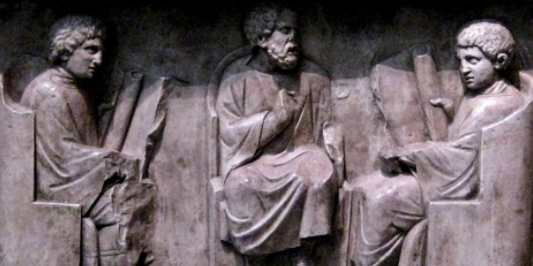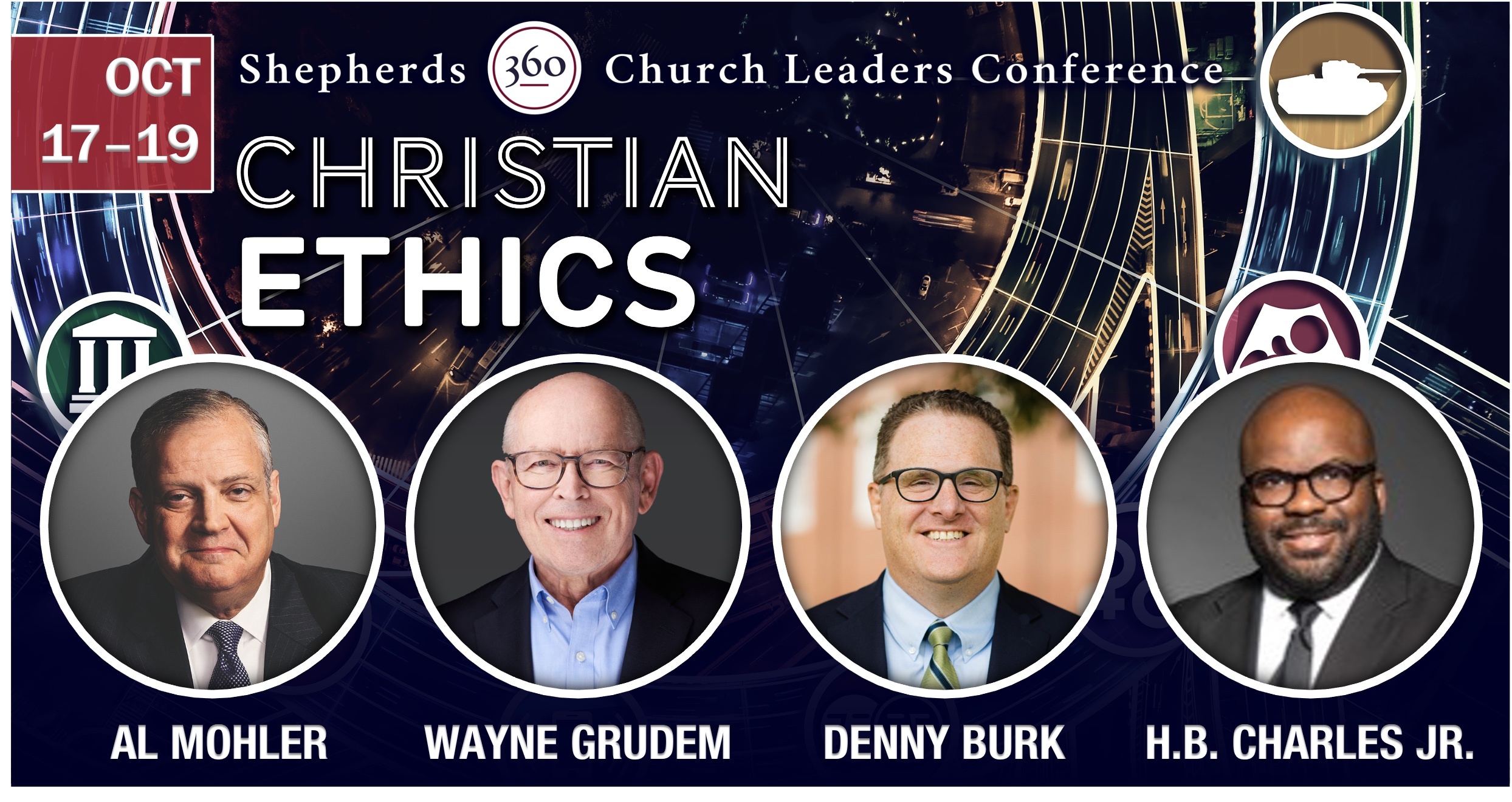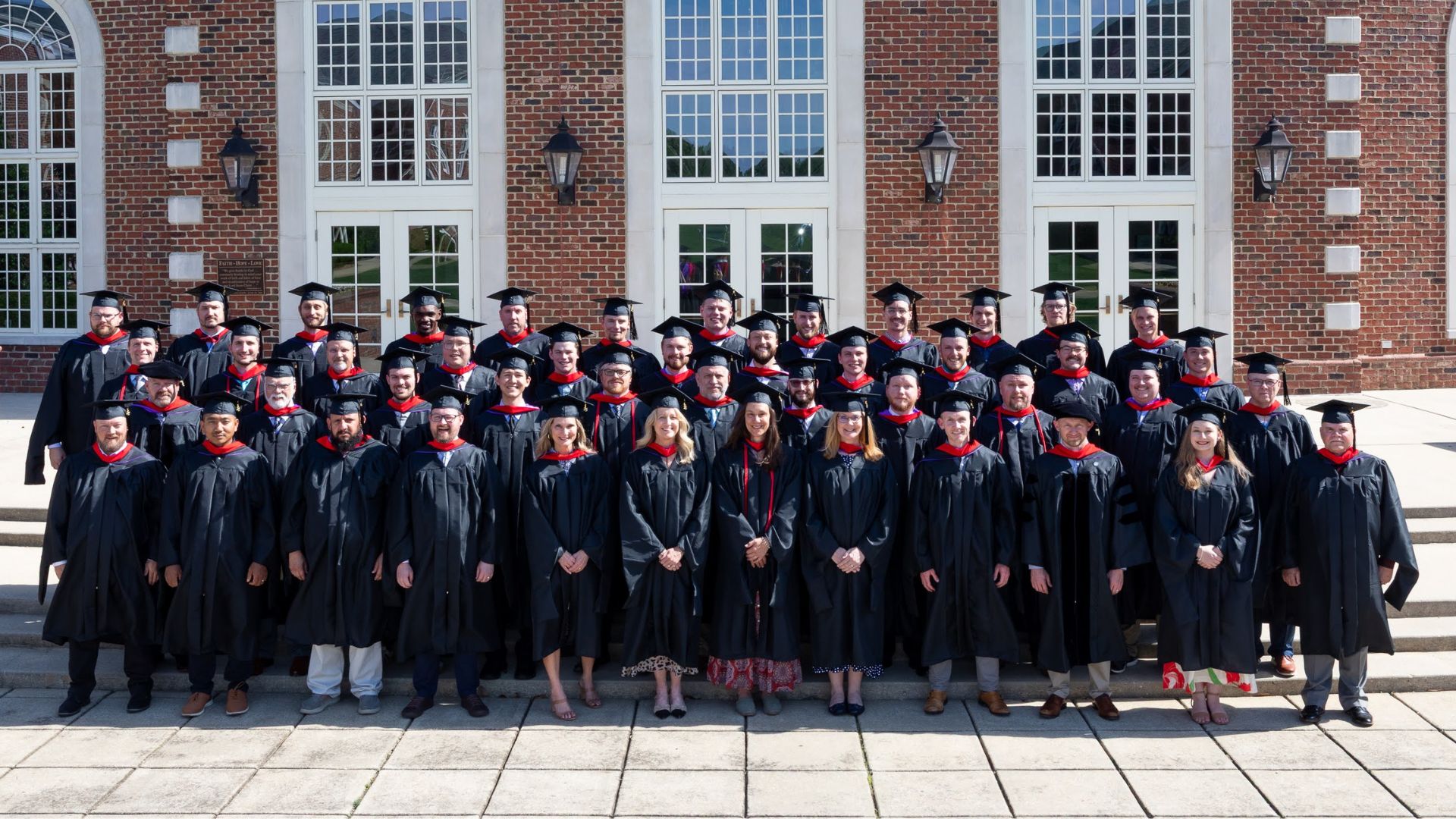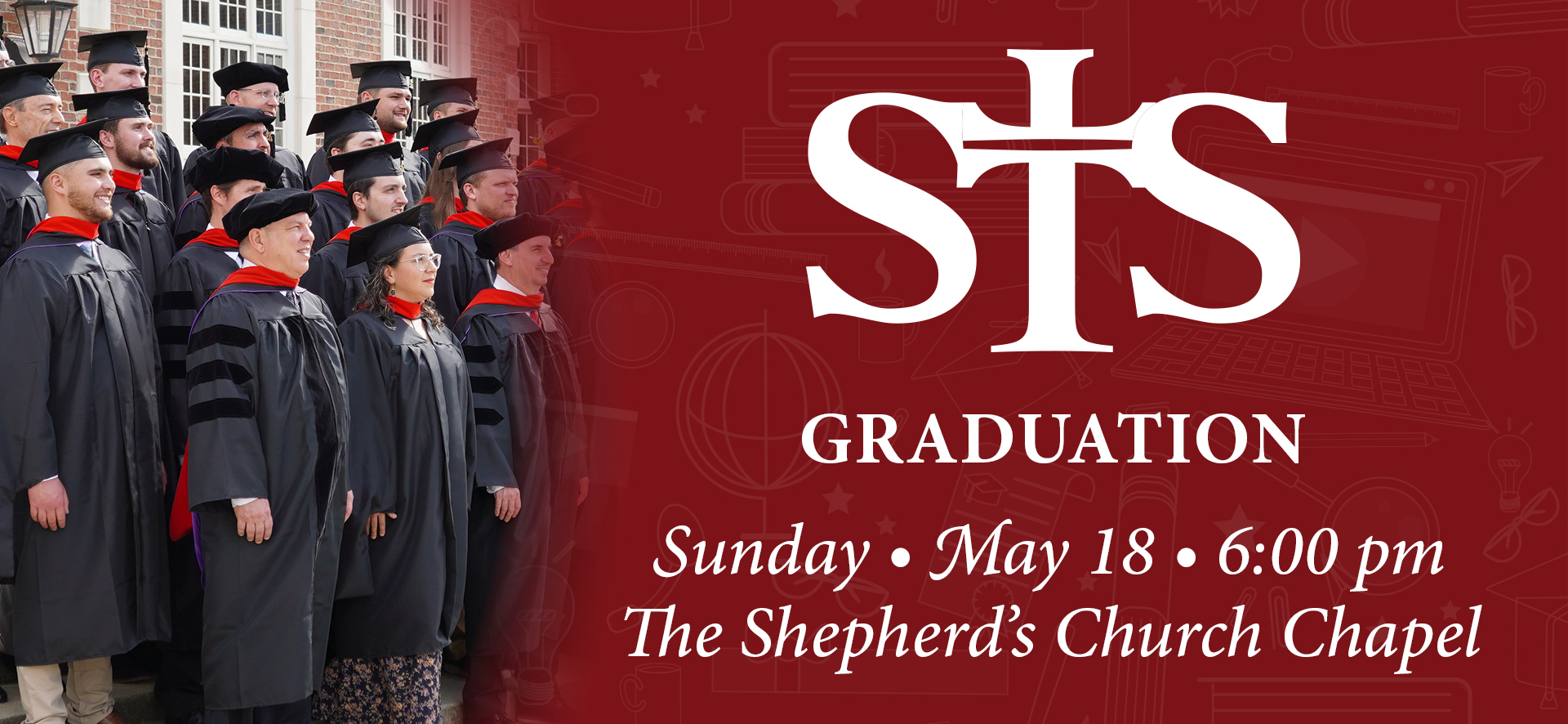Discipleship: Our Mandate, Our Mission
As Jesus prepared to leave his disciples, he provided them with a final command: “Go therefore and make disciples of all the nations, baptizing them in the name of the Father and the Son and the Holy Spirit, teaching them to observe all that I commanded you; and lo, I am with you always, even to the end of the age” (Matt 28:19-20, NASB). Jesus commands his disciples to disciple others. What is a disciple? The simple definition of the Greek word mathētēs (disciple) is one who learns or is a pupil of another.1 In biblical times, a disciple was one who followed a recognized teacher. Jesus commanded his disciples to be engaged in the process of “discipling” disciples. They were to baptize those individuals who accepted Jesus Christ as their Savior and to continually teach/instruct them in the truths of God’s Word. Discipling, thus, involves identification (baptizing) and instruction (teaching).
The disciple of Christ is urged within Scripture to grow in his spiritual life. Once the believer has accepted the gift of salvation, he becomes a new creation. Part of the obligation as a new creation is to become more like Jesus. A disciple is a believer in Christ who is becoming “transformed into the likeness of Jesus Christ.”2 To become a mature follower of Christ, the believer must strive to develop the mind of Christ. In 1 Corinthians 2:16, Paul states the following: “For who has known the mind of the Lord, that he will instruct him? But we have the mind of Christ.” The believer needs to live, act, respond, and think like his Savior. This demands that there is constant transformation of thinking and of mindsets, so that he can become more like Jesus in every aspect of life.
The term discipleship may be difficult at times to define. Today, it is being used as a catchall term for anything from mentorship to small-group discussion, to meetings at a coffee house, to the title for a conference at a sports arena. However, it is best to understand discipleship as “a deliberate process of moving Christians forward spiritually.”3 Discipleship has also been explained as “becoming a complete and competent follower of Jesus Christ” and “the intentional training of people who voluntarily submit to the lordship of Christ and who want to become imitators of Him in every thought, word, and deed.”4 The process of discipleship has been committed to the church, the Bride of Christ (Eph 4:4-16). The church is to be involved in the process of transforming the believer from a babe in Christ to a mature follower of Christ (1 Pet 2:2). Discipleship, then, is the process of learning the teachings of Scripture, internalizing them to shape one’s belief system, and then acting upon them in one’s daily life.
Present Concerns in Church Discipleship
Contemporary research has revealed several concerns that the church must acknowledge as it seeks to disciple believers: (a) there appears to be a decline of biblical literacy among believers today; (b) there appears to be an exodus of believers from evangelical churches today; (c) there appears to be an acceptance of inactivity among current evangelical Christians; and (d) there appears to be a de-emphasis of discipleship training within the church.
When taken collectively, these four areas present a dismal picture of the current state of discipleship taking place (or not taking place) within America churches today. These concerns ought to arouse an alarm over the loss of understanding and practice of biblically based, and historically practiced discipleship. As a step toward addressing these concerns, this study will examine the catechumenate, the post-apostolic discipleship program of the church. This post-apostolic period from 150 A.D. to 420 A.D. witnessed the rapid growth of Christianity through a deep commitment by believers to Jesus Christ. This growth occurred during a period of persecution by a morally corrupt and heretical culture, government, and society.
The Process and Procedures of the Catechumenate
The early church formulated a method of education (discipleship) for believers to train them in the knowledge and defense of their faith. Much of this training was required to take place prior to believer’s baptism and subsequently membership into the church. Through this process, commitment to Christ was evaluated, discipleship was implemented, education in theology and apologetics was taught, and moral character was mentored and enhanced.
The first official Christian education program for the church was the catechumenate. The catechumenate, from katēcheō in the active meaning “to teach” or “instruct”5 in the passive meaning “to listen”6 was designed for the education of adult converts prior to joining the church through baptism. Pasquato describes this important process of catechumenate as a critical step in preparing individuals for baptism and entrance into the church body.
Initiation (typical of every religion) in primitive Christianity was aimed at introducing persons coming from paganism or Judaism to Christian discipleship. . . . The catechumenate was a basic part of Christian initiation. The early church’s effort in selecting and preparing candidates for baptism was substantial: a process of initiation, growth and apprenticeship through which the whole person was transformed, orienting his life in a radically new way toward the God of Jesus Christ and the church community.7
The goal then of the catechumenate was to take a new convert to Christianity through a process of initiation into the church family.
Three intended purposes are noticeable as the church created this Christian educational program. The first purpose was to help develop a disciplined lifestyle among new believers. A second purpose was to acquaint the catechumen with the Christian tradition. The final purpose was to create a profound devotion to the Christian faith and way of life.8 Individuals passed through stages of increasingly intimate fellowship and participation within the Christian community. As they progressed through these stages, the catechumens would be introduced to deeper instruction until they were admitted to baptism and then participation in the Lord’s Supper. Cyril of Jerusalem provides insight as to why a process of systematic education was important.
Suppose, pray, that the Catechising is a kind of building: if we do not bind the house together by regular bonds in the building, lest some gap be found, and the building become unsound, even our former labour is of no use. But stone must follow stone by course, and corner match with corner, and by our smoothing off inequalities the building must thus rise evenly. In like manner we are bringing to thee stones, as it were, of knowledge.9
The desire of the catechumenal process was to equip and “build” new believers through an understanding of God’s Word, moral teachings from Scripture, and theological truths derived from the Bible.
By the 2nd Century AD, a defined process of catechumenal procedures was in place. The entire catechumenal process took several years to complete, and the new convert proceeded through various stages during these years in preparation for baptism. The church in the first through sixth centuries lived in a pagan, immoral, and hostile world. This community of Christians had sworn loyalty to Christ and pledged themselves to obey and follow His will. Christians considered themselves soldiers of Christ and fellow soldiers with other believers. At their baptism they were “enlisted” in Christ’s army. Their baptism served as a sacramentum, or pledge, which would be the equivalent of a military oath. They were members of the camp of Christ, and His Word served as their orders.10 The catechumenal process prepared them to enter this militant Christian lifestyle. There were four stages to the catechumenal process. It is important to examine each of these stages to understand the process that a new believer progressed through in the early church discipleship process.
1st Stage (preliminaries or entrance)
Entrance to the catechumenate was not granted immediately. There was a period of probation so that the church leaders could determine whether the candidate had experienced conversion. This conversion manifested itself in a changed lifestyle.11 A question is posed as to whether these individuals who entered the catechumenate were believers or unbelievers.
At the beginning of the Apostolic Tradition (an accumulation of material from different sources from a variety of geographical regions dating to the mid-second century AD) the following statement appears, which provides insight into the question of whether the individuals entering the catechumenal process were believers: “Concerning newcomers, those who will give their assent to the faith.”12 The initial interviewing teacher was further instructed: “Let them be asked the reason why they have given their assent to the faith.”13 One can infer from these statements that the new people coming to the church and entering the catechumenal process have a rudimentary level of faith. They have heard the gospel message and have exercised faith in that message. These individuals, after a profession of faith, now desire to join the community of believers by giving themselves to a period of rigorous study and preparation for baptism.14
The first stage of the catechumenal process (preliminaries) involved three primary steps. First, the individual was asked a series of questions pertaining to their motives for conversion.15 Second, the candidate was asked questions regarding status in life.16 Last, the candidate was asked questions regarding whether he/she was involved in trades or professions that must be abandoned because they are not compatible with the Christian life. This first stage was completed once the church leaders (instructors) had verified that the candidate was a believer who had demonstrated a verifiable conversion and was committed to serving God alone. Once the individual provided adequate answers to the above questions or changed his/her manner of life to match with the criteria for acceptance into the catechumenate, he/she could advance to the second stage of the catechumenal process.
2nd Stage (catechesis period)
The catechesis stage of the catechumenal practice typically lasted between 2-3 years in duration.17 The Apostolic Tradition requires that the candidates be taught for no less than three years. However, if one excelled during this catechesis stage the time of his/her baptism could be accelerated to allow an earlier entrance into the community of believers.18
During the second stage of the catechumenal process, the candidate was identified as a “hearer” and received instruction privately within a class setting. In addition, the hearers were persons admitted to the first part of the Christians worship service to hear the lectures and oral instruction (missa catechumenorum). Origen describes that there was a division of classes within this second stage of the catechumenal process.
They privately appoint one class consisting of recent beginners who are receiving elementary instruction and have not yet received the sign that they have been purified, and another class of those who, as far as they are able, make it their set purpose to desire nothing other than those things of which Christians approve. Among the latter class some are appointed to inquire into the lives and conduct of those who want to join the community in order that they may prevent those who indulge in trickery from coming to their common gathering; those who do not do this they whole-heartedly receive and make them better every day.19
This second stage involved an increase of scriptural and moral instruction as “hearers” progressed forward toward baptism and entrance into the community. These “hearers” were required to live in a morally acceptable manner approved by the body of believers.
The Apostolic Tradition provides a list of several areas of moral obligations that were required of the catechumen during this second inquiry or scrutiny. The catechumens “having been examined (if they lived virtuously while they were catechumens, and if they honored the widows, and if they visited those who are sick, and if they fulfilled every good work), and when those who brought them testify in his behalf that he acted thus, then let them hear the gospel.”20 One can gather that a high priority was placed upon a life of faith and practice of charity and justice.21
During this stage of catechesis, the instructor was entrusted with the important task of educating and training catechumens for entrance into the community. They were also the ones who guaranteed the moral excellence, conduct, and dignity of the catechumens.22 Though a specific manual of education that was consistent throughout the church does not exist, lectures from Cyril of Jerusalem, Augustine, and other church fathers reveal the importance that the church leaders placed on the instruction of the Scriptures, theological truths, and moral conduct.
3rd Stage (competentes or election)
The next stage of the catechumenal process involved advanced study of Christian doctrine and tradition. This stage usually took place during the second or third year of training depending upon the Eastern or Western Church’s traditions. Before entrance into the 3rd stage, the catechumens were examined again regarding moral living. The sponsors of the catechumens had to testify to the conduct of the catechumens during the 2nd stage (the instructional period).23 When one had been a hearer for a required length of time, one would undergo a second inquiry to discover if he or she was living a morally satisfactory life by Christian standards. These inquiries were called “scrutinies.” The inquiry was a “scrutiny” of life to genuinely attest whether the candidate was living a Christian lifestyle.24 According to Pasquato, this examination was assessed by the godparents (those believers assigned to the catechumens to mentor the candidates in moral conduct).25 The Apostolic Tradition describes this examination prior to the final stage of the catechumenal process.
Let them be proved and investigated first, how they have lived while catechumens, if they have honored widows, if they have visited the sick, if they have walked in all meekness and love, they have been earnest in good works. But let them be attested by those who bring them. And when they hear the gospel, let a hand be laid on them daily.26
This examination would lead to a period of advanced education before the final stage of baptismal preparation.
During this 3rd stage the catechumens were identified as competentes.27 Competentes were approved morally and were now approaching the final instruction that would culminate in their baptism. This final instruction was an intensive educational process that covered aspects of baptism, church membership, and service within the body. When the catechumen became a competente, he/she was scrutinized, indoctrinated through an advanced study of scriptural/theological truths, and disciplined. This period was much shorter than the 2nd stage, but the preparation was more intense and specialized.28
In the Eastern Church, the bishop examined the competentes and required testimony be given by fellow believers as to the quality of lifestyle being lived by the candidates for baptism. If the candidate qualified, he/she had their name registered in the Diptychs of the Living along with the name of their sponsor. In The Pilgrimage of Ethoria, a 4th century account of a Galician woman who made a pilgrimage to the Holy Land about 381–384 and wrote an account of her journey in a long letter to a circle of women back at home, the following quotation describes this scrutiny and registration of the competentes.
Then the bishop asks the neighbors of everyone who has entered concerning each individual, saying: “Does this person lead a good life, is he obedient to his parents, is he not given to wine, nor deceitful?” making also inquiry about the several vices which are more serious in man. And if he has proved him in the presence of witnesses to be blameless in all these matters concerning which he has made inquiry, he writes down his name with his own hand. But if he is accused in any matter, he orders him to go out, saying: “Let him amend, and when he has amended then let him come to the font (lavacrum).” And as he makes inquiry concerning the men, so also does he concerning the women.29
Following the registration of the competentes, the candidates advance into an advanced training for baptism. This intensive (special) instruction might occupy as many as three hours a day for seven weeks.30
4th Stage (baptismal period)
The ensuing step was the process of baptism. The baptismal period appears to coincide with the week prior to Easter Sunday (The Passion Week). On Thursday of the Passion Week the candidates for baptism perform ritual baths. On Friday and Saturday, the candidates fast in preparation for baptism. The competentes came to the baptistery on the night prior to Easter Sunday. There they engaged in a prayer vigil throughout the night and a memorization of the Apostles’ Creed. Part of this process involved a suntasso in which they covenant themselves to Christ with a preparation of readiness to obey his command.31 With this final stage completed with celebration of baptism, the catechumen joined the community of believers.32
Content Taught During the Catechumenate
The Scriptures
Within the entire catechumenal process various theological and biblical topics were taught to the catechumens. One major feature of the catechumenal process was the immersion of new believers in the Word of God. In the Canons of Hippolytus, part of the Apostolic Tradition, Hippolytus states that catechumens are “to be instructed in the Scriptures.”33 The assumption, because of the oral nature of the culture, is that large portions of Scripture were read to these new believers. However, teachers would also provide explanations of the texts that the catechumens were hearing read to them.34 Pierre Nautin (“Introduction” in Homelies sur Jeremie) argues that, due to the way in which the services were arranged, over the course of three years the whole Bible was read and commented upon by the teacher to the catechumens.35 Augustine in “On the Catechizing of the Uninstructed” argues that it is critical for the teacher to provide an overview of “salvation history.” The overview that Augustine provides would be equivalent to a modern-day Bible survey course.36 The early church understood the importance of the study of Scriptures. For them, it was essential that individuals be versed in the whole of Scripture before they could join the church. It is important to note that this biblical understanding/teaching was required of all new believers.
Theological Truths
Not only were catechumens taught Scripture, but they were also instructed in theological topics. Cyril of Jerusalem wrote a series of catechetical lectures that survive even to this day. Within the scope of these lectures, numerous topics are covered. The first of these lectures served as an introduction of the catechumenal process and baptism. In Cyril’s fourth catechetical lecture, he provides an overview of the doctrines that were taught to the catechumens during the process of the catechumenate. Those doctrinal categories included: God, Christ, the virgin birth, the cross, His burial, the resurrection, the ascension, the judgment to come, the Holy Ghost, the soul, the body, our bodily resurrection, the Holy Scriptures, among other practical topics.37 The doctrinal overview covered the theological topics that are often contained within modern systematic theologies. The remainder of Cyril’s theological lectures focused upon detailed treaties of the various phrases of the Apostle’s Creed, which was later memorized by the competentes before baptism. These theological topics were deemed necessary as foundational instructions for the catechumens to be properly prepared for baptism.
In addition to the works of these Church Fathers, there survived for today the sermons which dealt with theological themes by John Chrysostom38, Theodore of Mopsuestia39, and Ambrose of Milan40. Augustine provided for the church several sermons and lectures for catechumens in various stages of the catechumenal process.41 In these works, an abundance of theological and scriptural topics is addressed and clarified as catechumens prepared for baptism and entrance into the church.
Moral Instruction
In addition to the study of Scripture and an examination of theological topics, the catechumenate also placed a high priority on instruction related to moral formation. Cyril of Jerusalem begins his fourth catechetical lecture by stating:
Vice mimics virtue, and the tares strive to be thought wheat, growing like the wheat in appearance, but being detected by good judges from the taste. . . . For the method of godliness consists of these two things, pious doctrines, and virtuous practice: and neither are the doctrines acceptable to God apart from good works, nor does God accept the works which are not perfected with pious doctrines.42
Catechumens were called upon to commit themselves to a biblical standard of living prior to baptism and joining the community. John Chrysostom urged that baptism is not bestowed on individuals who had not turned from sin and lived a virtuous life.
For this reason I said before, and speak now and will not cease speaking, if any has not rectified the defects in his morals, nor furnished himself with easily acquired virtue, let him not be baptized. For the laver is able to remit former sins, but there is no little fear, and no ordinary danger lest we return to them, and our remedy become a wound.43
To Chrysostom, virtuous living was essential before one could join the church.
A major document used in the catechumenal process was the Didache.44 The first six chapters of this work provide moral or ethical exhortations around the doctrine of the “two ways.” The instructor would educate his catechumens to strive to live according to the way of life (virtue) versus living according to the way of death.45 The Didache explains those vices that lead to the way of death:
But the path of death is this. First of all, it is evil, and full of cursing; there are found murders, adulteries, lusts, fornication, thefts, idolatries, soothsaying, sorceries, robberies, false witnessings, hypocrisies, double-mindedness, craft, pride, malice, self-will, covetousness, filthy talking, jealousy, audacity, pride, arrogance.46
One can note that strong teaching and direct admonitions regarding moral transformation were a critical component to the catechumenate.47
During this catechumenal process, several characteristics regarding the teaching presented to the catechumens are noteworthy. 1) The teaching focused on ethical living. A candidate was required to understand the way of Christian living. 2) The core of the instruction related to the Apostle’s Creed, the Lord’s Prayer, and ordinances of baptism and the Lord’s Supper. 3) The intensive teaching involved instruction in theology and Biblical history/knowledge. The purpose of this teaching was to train the catechumen to live a godly lifestyle in a pagan society. In addition, the catechumen must understand what they believe and how to defend their beliefs in a pagan culture.48
Mentorship Practices during the Catechumenate
An important component to the entrance of the candidate for catechesis was the role of the “godparent” to the catechumen. These individuals have also been identified as “sponsors”49 or “spiritual parents.”50 Often these mentors led the candidate to conversion through faith in Jesus Christ. These mentors accompanied the candidate to the initial examination and bore witness to the faith of the catechumen.51 Apostolic Constitutions stated, “Let those who brought them give witness to them, after examining the things concerning them.”52
Before admission into the baptismal preparation, the sponsors once again were examined and provided proof that the catechumen has progressed in moral formation. The Canons of Hippolytus described this second examination by the sponsors.
The catechumen, when he is baptized, and he who presents him attests that he has been zealous for the commandments during the time of his catechumenate, that he has visited the sick or given to the needy, that he has kept himself from every wicked and disgraceful word, that he has hated vain glory, despised pride, and chosen for himself humility, and he confesses to the bishop that he [takes] responsibility for himself, so that the bishop is satisfied about him and considers him [worthy] of the mysteries, and that he has become truly pure, then he reads over him the gospel at that time, and asks him several times,” Are you in two minds, or under pressure from anything, or driven by convention? For nobody mocks the kingdom of heaven, but tis given to those who love it with all their heart.”53
These documents revealed that the role of the “godparent” was critical during catechesis. These mentors intimately knew their “spiritual children” because they had to attest to the spiritual growth in the candidates. These “godparents” were involved in mentoring the spiritual truths that were taught to the catechumens by the leaders of the church, thus these church members (godparents) played a key role in the spiritual development of the catechumens.
The Value of the Catechumenate for Discipleship Today
Though today’s church may never return to the catechumenal procedures, several lessons should be learned from the catechumenal process and implemented in current discipleship programs. Corporate Christian education is more than just a suggestion; it is a mandate. Perry Downs accurately asserts, “How the church teaches is open to a variety of cultural expressions, but that the church teaches is nonnegotiable. The Scriptures demand that the church educate its’ people for spiritual maturity.”54 Corporate education by the church is critical to the formation of the believer in progressive sanctification. It is the church’s responsibility to teach the believer the Scriptures, doctrinal truth, and moral purity. Each of these factors is a critical component in the process of discipleship.
The post-apostolic church placed a high priority on training and educating new believers before they joined the church community. In a world of persecution, vice, and doctrinal heresies, it was critical to train new converts in the teachings of Scripture, doctrinal orthodoxy, and moral purity. The early church developed the catechumenate to accomplish this important corporate education of new believers. The success of the catechumenate can be seen though a historical lens. History reveals that the church flourished and expanded during the first six centuries AD. One reason, among many, for this expansion was due to the training of believers to know what they believed, why they believed it, and how to defend it in a hostile environment. Clinton Arnold accurately states: “By contrast, many evangelical churches today place a minimal emphasis on the training of new believers, especially when compared to the prominence and importance of the catechumenate in the ancient church.”55
As one examines the cultural difficulties that the early church faced, one is impressed that current society reflects many of the same immoral influences. One needs to merely turn on the television or read a popular magazine and issues such as pornography, homosexuality, promiscuity, violence, etc. are immediately apparent. Churches are battling doctrinal heresies from both within the church (annihilationism, open theism, non-virgin birth, inerrancy, etc.) and from outside (evolution, cults, challenges to the deity of Christ, etc.). Churches today would be wise to heed the example of the early church and create a program in which new believers are trained to both know their faith and to defend it in the face of opposition. Immorality is prevalent in our society, and churches would also be wise to instruct and create mentoring programs in which the Christian ethic is taught and exemplified to new believers within the church.
The post-apostolic church placed a high priority upon training and equipping new believers to live for Christ in a hostile world. Several lessons should be learned from the catechumenal process.
Lesson #1 – Catechumens were serious about their commitment to Christ.
The catechumenal process occurred over a two-three-year period. In addition, the process was filled with extensive instruction but also evaluation of moral conduct and application of the lessons that were taught by the church. The catechumens were called upon to serve extensively within the church. The commitment that the catechumenal process demanded was a serious commitment to Christ and the church. The questions arise today, Are our churches filled with believers that are fully committed to Christ? Do we as a church demand commitment to Christ? Or have we reduced Christianity to “easy believism”? The catechumenal process challenges today’s church to evaluate our commitment to Christ.
Lesson # 2 – Catechumens believed they were engaging in spiritual warfare and by joining the church they must obey the Commander, Jesus Christ.
In a culture of opposition and persecution, the catechumens viewed the Christian walk as spiritual warfare. By joining the church, they were obeying their “Commander.” Whatever Christ asked of them, they needed to obey. Does the 21st century church view the Christian life as a spiritual battle (Eph 6:12 – “For our struggle is not against flesh and blood, but against the rulers, against the powers, against the world forces of this darkness, against the spiritual forces of wickedness in the heavenly places”)? Often in Western cultures, where persecution is not the norm in the 21st century context, the Christian life is not an intense struggle. Are we acutely aware of the conflict we are in? Do we view Christ as our “Commander in Chief?
Lesson # 3 – Early church leaders developed a systematic Christian educational program to instruct new believers in the scriptures, theology, and moral conduct.
The catechumenate was an intense educational program that taught in areas of moral conduct, theological issues, and Scriptural guidelines and principles. The goal of the catechumenal process was comprehensive spiritual change. Do churches today have an intentional program to educate new believers? Are our discipleship programs comprehensive in their scope? Do we have a prescribed sequence of instruction to prepare modern believers to answer the difficult questions they are facing in today’s world?
Lesson # 4 – Catechumens did not join the church immediately, but rather were tested to see if they were truly committed to Christ.
Part of the reason for the two-three-year catechumenal process was to prove and approve of the new believers before entrance into the church community. During a time of persecution, it was important for the early church to vet individuals who wished to join the church. In addition, these new believers needed to be approved before joining the church to make sure that they were living a morally acceptable life that followed the principles expressed in the Bible. Though 21st century western churches do not face the same persecution as the early church or as other churches face in various locations around the globe today, it is important that believers are committed to Christ and the church body before joining the church. This writer agrees with the questions posed by Clinton Arnold. Is a four-week (six-week, or eight-week) new Christians’ class enough? Are we getting new believers adequately immersed into the Scriptures? Are we helping new believers repent completely of sinful lifestyles and practices?56 In addition to these questions it may be important for our churches to ask, do our candidates for membership understand what is involved when they join our church? Do they fully understand and accept our church’s bylaws and constitution? Can a full understanding of our church’s procedures be achieved in a few days or in a couple of weeks?
Lesson # 5 – Catechumens were assigned, or brought with them from the beginning, spiritual mentors who became actively involved in the education (specifically moral education) of the new believers.
The catechumens were not only instructed through corporate education by church leaders but also through mentorship by church members. Do our church’s today have an active mentorship program where new believers are practically trained by mature believers? Are we intentional in our mentorship endeavors? Or has discipleship been reduced to simply lectures from the pulpit or in the classroom?
Lesson # 6 – These spiritual mentors (godparents) knew the catechumens’ spiritual lifestyle because the mentors would ultimately give attestation to the spiritual growth of their assigned catechumen.
Not only were the “godparents” involved in the moral education of the catechumens, but they also had intimate knowledge of the spiritual growth of their assigned catechumen. The “godparents” were involved in the “scrutinies” before entrance to baptism. They had to answer questions as to the growth within the life of their assigned catechumen. Do we have intimate knowledge of our fellow believers in our churches? Do we understand the struggles and sins that the people in our congregations are facing? Do we even ask about the spiritual growth of one another much less hold each other accountable?
Lesson # 7 – At the culmination of the catechumenal process, these new members of the church were fully committed to Christ and to their fellow brothers/sisters in the Lord.
By joining the church, the catechumens were allowed intimate spiritual fellowship with their brothers/sisters in Christ. This fellowship was earned as they endured the catechumenal process. Are we committed to one another as believers in Christ? Do we defend one another in the face of opposition? Are we intentional about expressing our love through service within the church?
Conclusion
The catechumenate developed as a corporate educational tool to be used to train new believers to understand what they believe, why they believe it, how to defend it, and how to live it in a hostile world. This process was not a quick process (not the customary 4-8 weeks, as is often seen in churches today), but rather was accomplished through various interviews, lectures, and mentorship over a period of two to three years. The pastors/bishops of the Patristic period saw the value and need for this corporate education for the growth of individuals within their congregations. Are there lessons that we can learn from the early church? Are there practices from the catechumenate that should be incorporated in discipleship programs today? Is essential biblical and theological content omitted today in our discipleship programs that were present in the early church? The catechumenate was a powerful training method in its day. Churches today might benefit by critically evaluating the catechumenal model as they seek to educate the next generation of believers.
END NOTES
1 Walter Bauer, William F. Arndt, Wilbur Gingrich, and Fredrick W. Danker. A Greek-English Lexicon of the New Testament and Other Early Christian Literature. 2nd. Ed. (Chicago, IL: University of Chicago Press, 1979), s.v. mathētēs, 486.
2 George Barna, Growing True Disciples: New Strategies for Producing Genuine Followers of Christ (Colorado Springs, CO: WaterBrook Press, 2001), 18.
3 Brad J. Waggoner, The Shape of Faith to Come: Spiritual Formation and the Future of Discipleship (Nashville, TN: B & H Pub. Group, 2008), 14.
4 Barna, Growing True Disciples, 18.
5 BDAG, 423.
6 Ottorino Pasquato, Encyclopedia of Ancient Christianity, A-E: Catechumenate-Discipleship (Downers Grove, IL: Intervarsity Press, 2014), 458.
7 Pasquato, Encyclopedia of Ancient Christianity, A-E: Catechumenate-Discipleship, 459.
8 Lewis J. Sherrill, The Rise of Christian Education (New York: The Macmillan Company, 1950), 186.
9 Philip Schaff, Nicene and Post-Nicene Fathers of the Christian Church: Cyril of Jerusalem and Gregory Nazianzen. Vol. VII (Grand Rapids, MI: WM. B. Eerdmans Publishing Company, 1978), 3.
10 Sherrill, The Rise of Christian Education, 187.
11 Michel Dujarier, A History of the Catechumenate: The First Six Centuries (New York: William H. Sadlier Inc., 1979), 60.
12 Bradshaw, et. al., The Apostolic Tradition: A Commentary, 82.
13 Ibid., 28.
14 Arnold, JETS, 42.
15 Bradshaw, et. al., “Apostolic Constitutions 8.32.2-6,” The Apostolic Tradition, 83. “Let those first coming to the mystery of the godly life be brought by the deacons to the bishop or to the presbyters and let them be examined as to why they came to the Word of the Lord. Let those who brought them give witness to them, after examining the things concerning them.”
16 Ibid., 83.
17 Pasquato, Encyclopedia of Ancient Christianity, A-E: Catechumenate-Discipleship, 461.
18 Bradshaw, et. al., “Apostolic Constitutions 8.32.16,” The Apostolic Tradition, 97. “Let the one coming to be catechized be instructed for three years. But if anyone is eager and has zeal for the task, let him be received, for it is not the time but the way that is judged.”
19 Henry Chadwick, Origen: Contra Celsum (Cambridge, UK: Cambridge University Press, 1953), 163.
20 Bradshaw et. al., The Apostolic Tradition, 104.
21 William Harmless, Augustine and the Catechumenate (Collegeville, MN: Liturgical Press, 1995), 43.
22 Pasquato, Encyclopedia of Ancient Christianity, A-E: Catechumenate-Discipleship, 461.
23 Dujarier, A History of the Catechumenate, 52.
24 Sherrill, The Rise of Christian Education, 189.
25 Pasquato, Encyclopedia of Ancient Christianity, A-E: Catechumenate-Discipleship, 461.
26 Bradshaw et. al., “Testamentum Dominin 2.6,” The Apostolic Tradition, 105.
27 Ibid., 458.
28 Lawrence D. Folkemer, “A Study of the Catechumenate,” Studies in Early Christianity (New York: Garland Publishing Inc., 1993.), 291.
29 M. L. McClure and Charles L. Feltoe. The Pilgrimage of Ethoria. Accessed March 14, 2012, from http://www.ccel.org/m/mcclure/etheria/etheria.htm.
30 Ibid.
31 Sherrill, The Rise of Christian Education, 193.
32 A detailed description of the baptismal proceedings is described by Bradshaw et. al., The Apostolic Tradition, 105-121. See Appendix 4.
33 Bradshaw et. al., The Apostolic Tradition, 83.
34 Arnold, JETS, 46.
35 Harmless, Augustine and the Catechumenate, 42.
36 Schaff, Augustine: On the Holy Trinity, Doctrinal Treatises, Moral Treatises, 285-286.
37 Schaff, Nicene and Post-Nicene Fathers of the Christian Church: Cyril of Jerusalem and Gregory Nazianzen, 19-28.
38 See Appendix 6.
39 See Appendix 7.
40 See Appendix 8.
41 See Appendices 9-11.
42 Schaff, Nicene and Post-Nicene Fathers of the Christian Church: Cyril of Jerusalem and Gregory Nazianzen, 19.
43 John Chrysostom, Instructions to Catechumens: Second Instruction, Translated by T.P. Brandram, Accessed August 28, 2014 from http://www.newadvent.org /fathers/1908.htm.
44 Sherrill, The Rise of Christian Education, 187.
45 Arnold, JETS, 50.
46 Hoole, C.H. Didache. Accessed March 22, 2012, from http://www.earlychristianwritings.com/text/didache-hoole.html.
47 Arnold, JETS, 50.
48 Sherrill, The Rise of Christian Education, 196.
49 Dujarier, A History of the Catechumenate, 48.
50 Pasquato, Encyclopedia of Ancient Christianity, A-E: Catechumenate-Discipleship, 466.
51 Dujarier, A History of the Catechumenate, 48.
52 Bradshaw, et. al. “Apostolic Constitutions 8.32.2-6,” The Apostolic Tradtion, 83.
53 Ibid., “Canons of Hippolytus,” 105.
54 Downs, Teaching for Spiritual Growth, 29.
55 Arnold, JETS, 44.
56 Ibid., 40.










